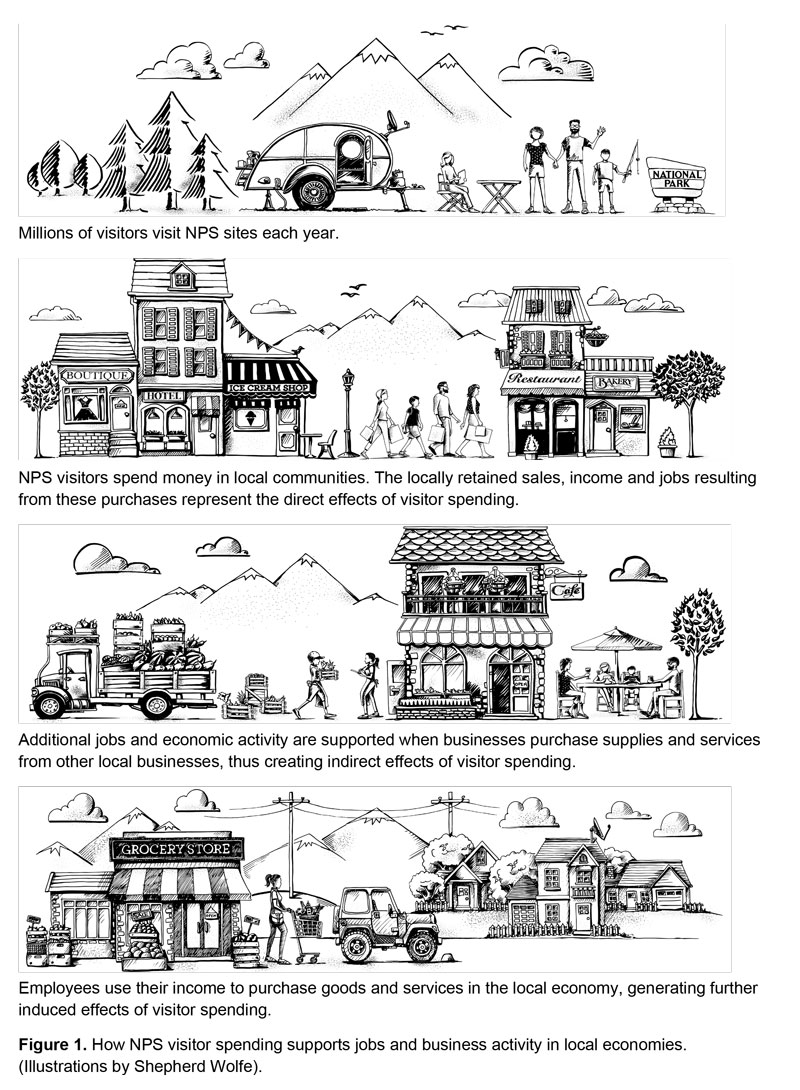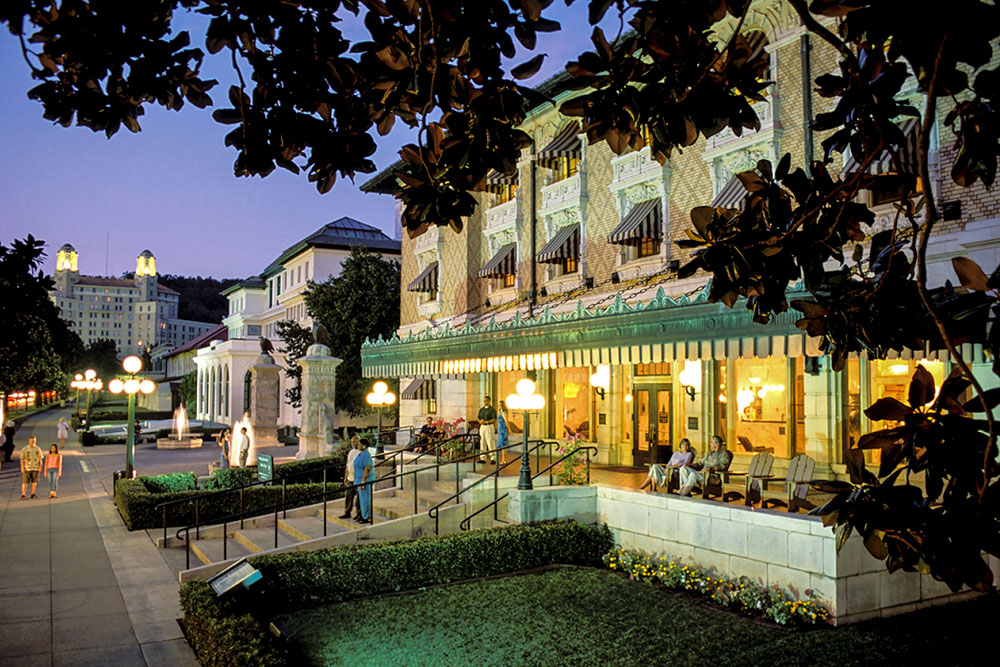A new report shows visitor spending contributed $50.3 billion nationwide, supported nearly 380,000 jobs
The Department of the Interior announced that visitor spending near national parks in 2022 resulted in a record-high economic benefit of $50.3 billion and supported 378,400 jobs in the surrounding communities.
“At the Interior Department, we understand that nature is essential to the health, well-being, and prosperity of every family and every community in America. But outdoor recreation is not just good for the soul, it’s a significant driver of our national and local economies and job sustainability,” said Secretary Deb Haaland. “When people visit one of our amazing parks, they are contributing to the community around them. That’s why our Administration is working so hard through President Biden’s Investing in America agenda to provide resources to the National Park System for critical infrastructure and maintenance needs.”

The National Park Service report, 2022 National Park Visitor Spending Effects, finds that nearly 312 million visitors spent $23.9 billion in communities within 60 miles of a national park. Of the 378,400 jobs supported by visitor spending, 314,600 jobs were in park gateway communities.
“Since 1916, the National Park Service has been entrusted with the care of our national parks. With the help of volunteers and partners, we safeguard these special places and share their stories with more than 300 million visitors every year. The impact of tourism on national parks is undeniable: bringing jobs and revenue to communities in every state in the country and making national parks an essential driver to the national economy,” said National Park Service Director Chuck Sams.
Annual appropriations for the National Park Service totaled $3.3 billion in fiscal year 2022, effectively turning a $1 investment in national parks into a more than $10 boost to the nation’s economy.

The latest report utilizes new socioeconomic survey data to improve spending estimates for each park and gain insights into park visitors. The advanced monitoring also provides more accurate estimates of the economic contributions of parks to communities.
Users can access the Visitor Spending Effects report series online, which includes an interactive tool for viewing trend data and exploring visitor spending, jobs, labor income, value-added, and economic output effects by sector for national, state, and local economies on a year-by-year basis. The interactive tool is available on the Visitor Spending Effects webpage.
The annual peer-reviewed economics report was prepared by economists from the National Park Service. Learn more about how NPS-managed lands and programs provide economic benefits on the NPS economics webpage.
Arkansas Connections
A 2021 National Park Service (NPS) report showed that 1.5 million visitors to Buffalo National River in 2020 spent $66.3 million in communities near the park. That spending supported 960 jobs in the local area and had a cumulative benefit to the local economy of $76.1 million.

Arkansas currently has 9 properties managed by the National Park Service:
- Arkansas Post National Memorial – Gillett, AR – Located at the confluence of two rivers, has been a hub of cultural exchange throughout history, showcasing both cooperation and conflict between diverse communities.
- Buffalo National River – Harrison and St. Joe, AR – Established in 1972, the Buffalo National River flows freely for 135 miles and is one of the few remaining undammed rivers in the lower 48 states. Once you arrive, prepare to journey from running rapids to quiet pools while surrounded by massive bluffs as you cruise through the Ozark Mountains down to the White River.
- Butterfield Overland National Historic Trail – MO, AR, OK, TX, NM, AZ, CA – In 1857, businessman and transportation entrepreneur John Butterfield was awarded a contract to establish an overland mail route between the eastern United States and growing populations in the Far West. What became known as the Butterfield Overland Trail made an arcing sweep across the southern rim of the country. Stagecoaches left twice a week carrying passengers, freight, and mail.
- Fort Smith National Historic Site – Fort Smith, AR, OK – Explore life on the edge of the frontier and Indian Territory through the stories of soldiers, the Trail of Tears, scandals, outlaws, and lawmen who pursued them. From the establishment of the first Fort Smith on December 25, 1817, to the final days of Judge Isaac C. Parker’s jurisdiction over Indian Territory in 1896, Fort Smith National Historic Site preserves almost 80 years of history.
- Hot Springs National Park – Hot Springs, AR – Hot Springs National Park has a rich cultural past. The grand architecture of our historic bathhouses is equally matched by the natural curiosities that have been drawing people here for hundreds of years. Ancient thermal springs, mountain views, incredible geology, forested hikes, and abundant creeks – all in the middle of town – make Hot Springs National Park a unique and beautiful destination.
- Little Rock Central High School National Historic Site – Little Rock, AR – In 1957, Little Rock Central High School was the epicenter of confrontation and a catalyst for change as the fundamental test for the United States to enforce African American civil rights following Brown v. Board of Education. Learn how the sacrifice and struggle endured by the Little Rock Nine have provided opportunities and opened doors for those seeking equality and education around the world.
- Pea Ridge National Military Park – Pea Ridge, AR – On March 7-8, 1862, over 23,000 soldiers fought here to decide the fate of Missouri which was a turning point of the war in the Trans-Mississippi. This 4,300-acre battlefield honors those who fought and died on these hallowed grounds. Pea Ridge was the most pivotal Civil War battle west of the Mississippi River.
- President William Jefferson Clinton Birthplace Home National Historic Site – Hope, AR -Named for the father who died shortly before his birth, William Jefferson Blythe III later became the 42nd President of the United States. In this place, the experiences shared with his mother & grandparents in rural Arkansas developed the broad views on race relations, social justice, and public service that defined his presidency and life after the White House. For Bill Clinton, “Hope was home.”
- Trail Of Tears National Historic Trail – AL, AR, GA, IL, KY, MO, NC, OK, TN – Remember and commemorate the survival of the Cherokee people, forcefully removed from their homelands in Georgia, Alabama, and Tennessee to live in Indian Territory, now Oklahoma. They traveled by foot, horse, wagon, or steamboat in 1838-1839.






